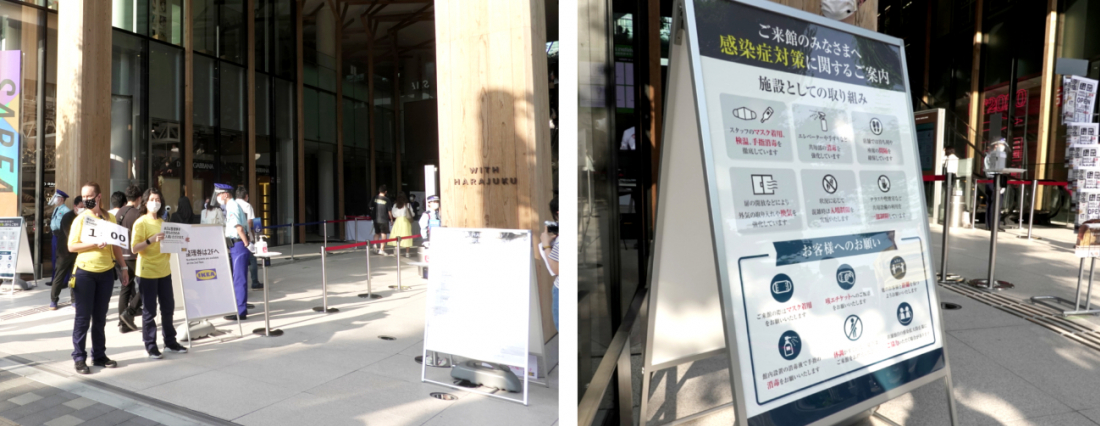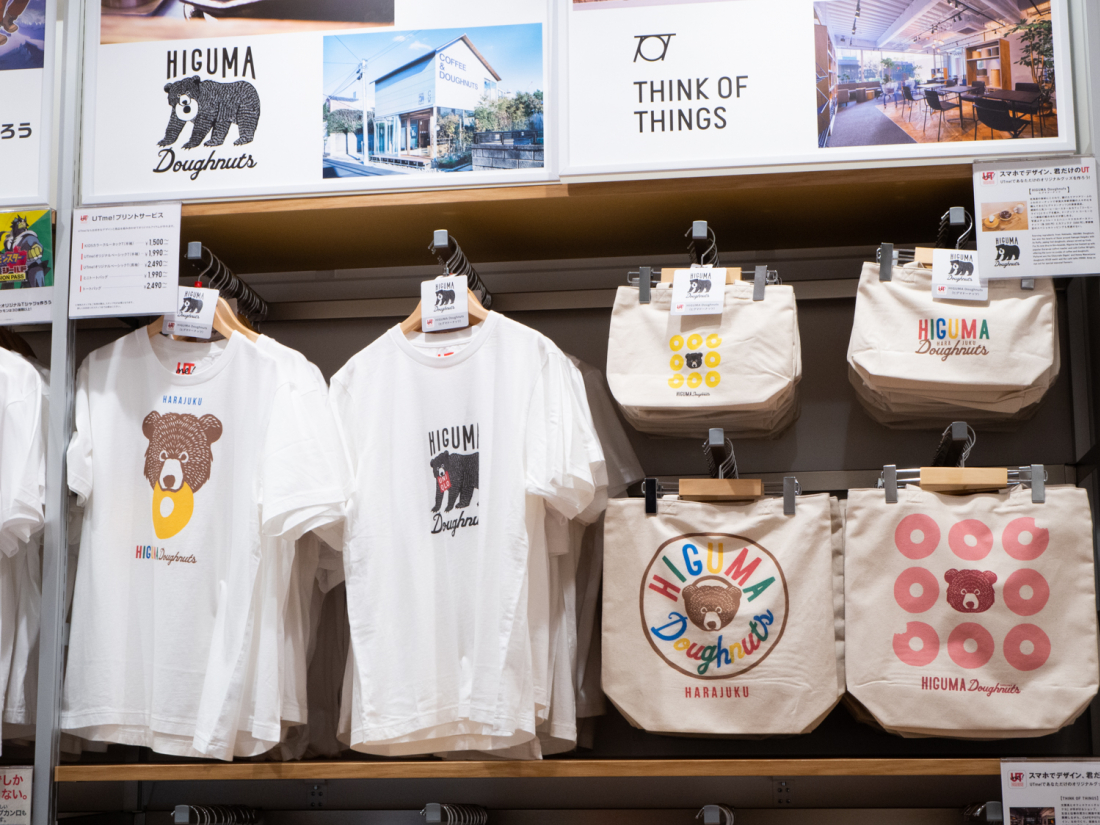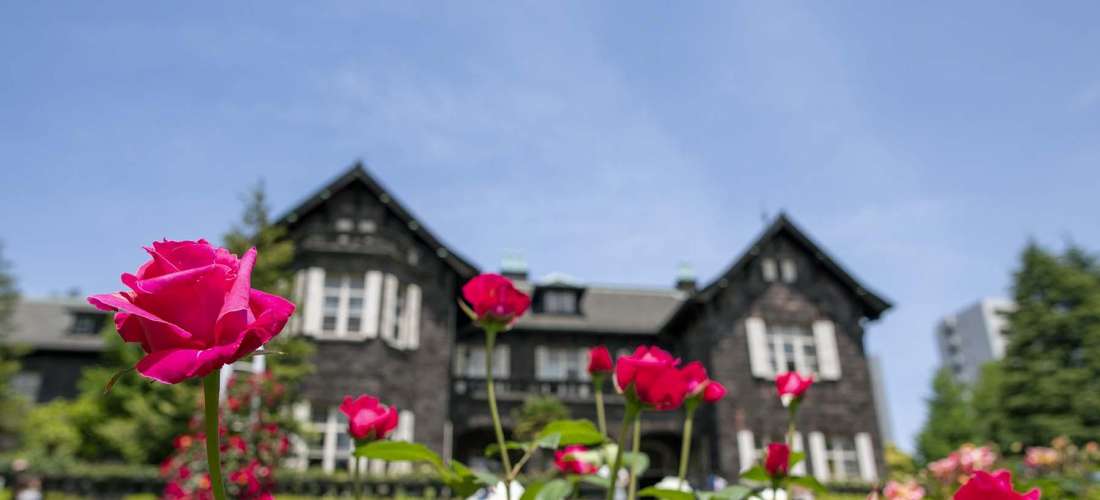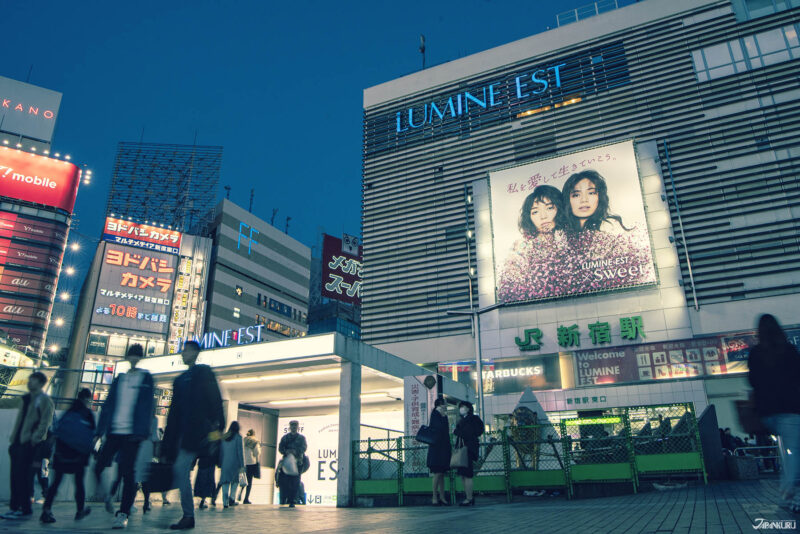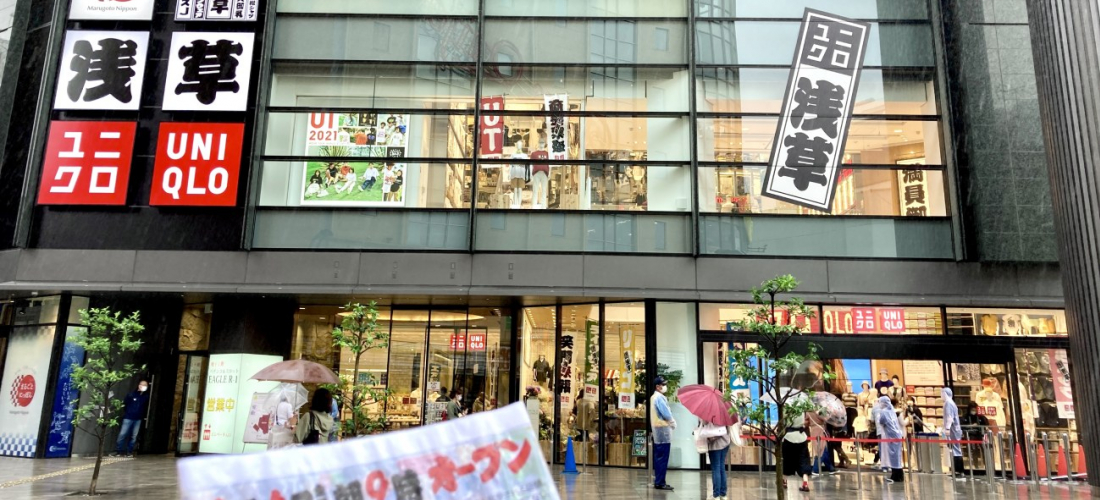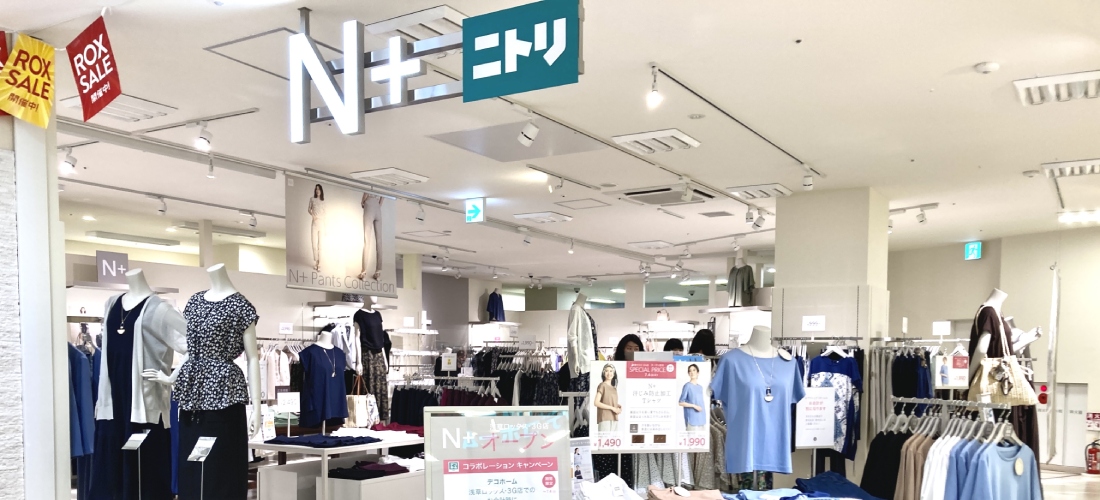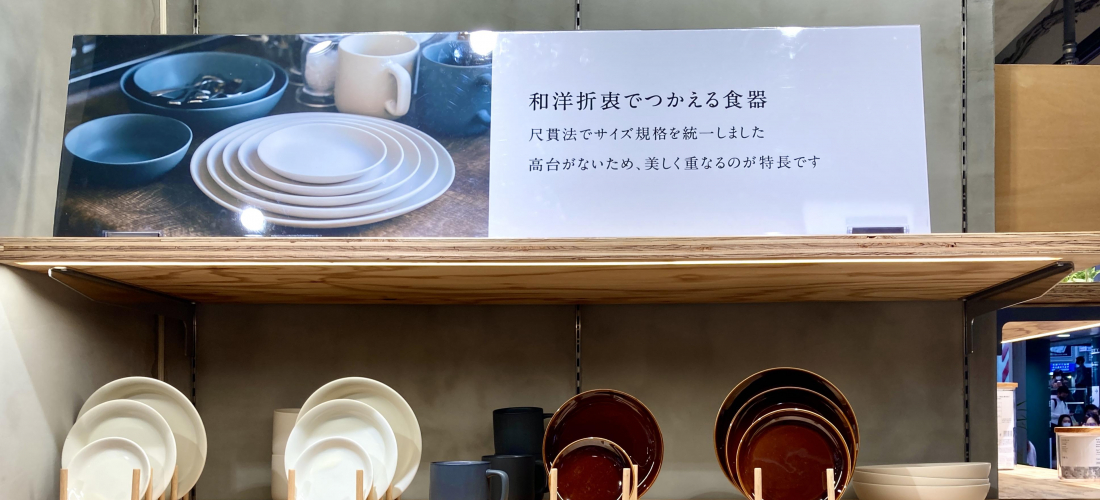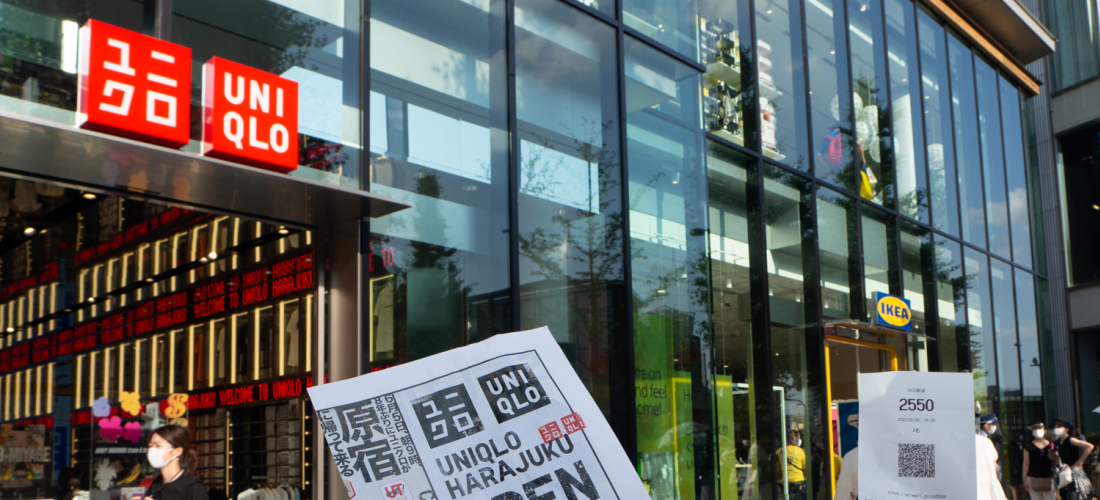
CONTENTS
The world’s first city-center Ikea and a futuristic new Uniqlo together in Harajuku, Tokyo – of course the Japankuru team had to check out this new shopping mall connecting Takeshita Street and Omotesando!
With Harajuku
With Harajuku is a brand new shopping mall directly across from Harajuku Station and wedged between the famous Takeshita Street and Omotesando, and we just recently wrote about why the people of Tokyo have been waiting for With Harajuku's opening with some excitement. The Friday, June 5th opening of With Harajuku's sleek new Uniqlo marks the return of the major Japanese clothing brand to the Harajuku neighborhood after a conspicuous 8-year absence, and Uniqlo is back in a big way. Plus, on Monday (June 8th) the world's first-ever city-center Ikea opened its doors from within the With Harajuku complex, showing people what might just be the partially-digital, experience-focused future of the brand.
In the coming days more and more stores are going to start welcoming customers all around the shopping facility, but the Japankuru team wanted to catch the excitement of With Harajuku's most hyped grand openings.
Things have calmed down somewhat in Japan, but the COVID-19 outbreak hasn't completely died out in Tokyo, so on Monday afternoon we slipped on our masks and took the train over to Harajuku.
Of course, since we've spent most of the past few months in lockdown, or at least doing our best to avoid crowds, this was our first time in Harajuku since the opening of the new train station. We didn't spend much time exploring the new building, but from what we saw it's a pretty simple addition. We can appreciate the added space built, though, for the massive Harajuku crowds that will inevitably return to the neighborhood in the coming months.
With Harajuku is literally just across the street from Harajuku Station, and the various entrances are spread along the block between the station's two exits. The new Ikea and Uniqlo are right next to each other, and when we first arrived we were a little terrified by the crowd milling around on the sidewalk. Would we ever make it into either shop!?
Fortunately, it wasn't too bad. Since it was the very first day of business for Ikea, it was extremely popular, and in order to prevent overcrowding (which would increase COVID-19 infection risk) they instituted a numbered ticket system for the day. Around With Harajuku there were also quite a few signs explaining all the measures in place to keep the facility as safe as possible, while there's still risk of coronavirus infection. As we went to take our number for Ikea, and throughout the rest of our trip, we were constantly taking advantage of the many bottles of hand sanitizer set aside for public use, and our temperature was checked as we went into both of the stores.
Uniqlo Harajuku
Uniqlo has a nice big entrance at street level, but it's a huge complex of different rooms spread out over a pretty large area, and during the grand opening they were asking us to enter via the basement level entrance. This made it so our first stop was… the Uniqlo Harajuku flower shop?? I'm still not entirely sure what their goal is, here, but it seems like you can buy custom Uniqlo bouquets, if that suits your fancy. The flowers were lovely and all, but we had no real use for bouqets that we'd be hanging on to for the rest of the night.
Aside from the main Harajuku Uniqlo space (and the flower shop set up in the hallway area outside), there's another little annex in a separate room on the basement floor, centered around the Style Hint app. We'll have to see where things go in the future, but for the grand opening Uniqlo had given people a chance to submit their own Uniqlo-centric outfits for style inspiration, and made up this wall of fashion. Using the many touch screens, you could not only vote for your favorite outfits, but also look up the items used in the outfit and find out where in the store they were being sold. If you like what you see, not only will a little map of the store pop up on the screen with a map showing you where to buy the item, but you can use a QR code to open the same map on your phone while you search for the product. It's a cool system!
We took our maps and headed into the main area, greeted first thing by hundreds of different Uniqlo UT t-shirts. Uniqlo is clearly emphasizing their UT line in Harajuku, considering this is far from the last time we saw UT products.
Just around the corner was a UTme! booth, where you could customize (to a certain extent) t-shirts and tote bags. Similar to standard UT t-shirts, it seems like the custom ones use imagery and designs from a variety of temporary brand collaborations. I would be lying if I said we didn't seriously consider getting some items plastered with the adorable bear illustrations from local Harajuku donut shop Higuma Doughnuts.
The UTme! counter was far from the only special set up in the main store, though, marking its difference from your standard Uniqlo―as we ventured further into the shop we saw quite a few. One area concentrated on the brand's recycling efforts, with information panels teaching readers about the recycled materials used in Uniqlo clothing and bins where shoppers can actually drop off clothes they want to donate. On the other side of a nearby wall was a display showing some "recycled" Uniqlo outfits created by Japanese designers. Since UT Goods (tote bags, stationery, stickers, and ceramic plates decorated with UT designs) are sort of a new line of items, they also had a few different shelves and racks devoted to the new novelties.
Perhaps the most interesting construction, possibly because it was the most unrelated to Uniqlo's products, was the "Spotify SPECIAL BOOTH," only there for a limited time. Three stations with tablets and headphones were set up with big posters of three different bands or musical artists, who had each put together their own Spotify playlists just for the Harajuku Uniqlo opening. The music was a fairly eclectic mix for Japan―not bad!
Heading back up to the ground floor was like emerging into another world. While much of the basement floor was designed and arranged like any other Uniqlo, the street-level space was there to make an impression. Lots of screens, and lots of reflections.
Also, lots more UT merchandise. The opening of the store coincides with a big collaboration Uniqlo has going on with Billie Eilish, so they had some of the original illustrations that are now being printed on the products on display. If you're a big fan of everything Billie Eilish, it's a cool look behind the scenes.
Good night, Billie.
Ikea Harajuku
It took about an hour and a half for Ikea to call our number, which turned out to be the perfect amount of time to thoroughly explore Uniqlo, so when it was our turn we were ready to go. When we took the ticket we put in a phone number, so I actually got an automatic phone call telling me I could go over to Ikea. But I'd also been keeping an eye on our place in line by scanning the ticket's QR code and checking on purpose-built website. When I got the call, it did still say there were 700 in front of me in line, though. Mysterious. Either way, we headed over to the crowd of shop staff at the entrance, had our temperature checked, and headed in.
Wondering what a city-center Ikea is like? Well, altogether it's not all that different from a normal Ikea, although it is a little smaller. Much of the space is taken up by what Ikea generally calls the "marketplace," where they sell the kinds of home goods and small items that you can toss in a shopping bag and carry home.
It's not totally furniture-free, though. An average Ikea might have dozens of model rooms set up and spaces for beds, carpets, chairs, and everything else you might want to furnish your home. The Ikea in Harajuku had a handful of model rooms made intentionally small, just like your average Tokyo apartment, showing off how the furniture works in a smaller space. Plus, portions of the wall and sections of floor are dedicated to some of Ikea's most popular furniture. If something draws your eye, though, you can't just go to the warehouse area and bring your new furniture home with you. It's a digital worldーif you want something, you can order it online from the store and they'll deliver it right to your house.
This wouldn't be Japan if there weren't special photo-op spots! Unlike many stores in Japan, photography was clearly allowed throughout With Harajuku, so people were posing all over the place.
Sure, you could pick out some new cups for your kitchen or a storage box or two to organize your closet. But really, it was clear what Ikea was looking to capitalize on in Harajuku: food. The "Swedish Cafe" and "Swedish Convenience Store" inside the shop are big selling points for Ikea Harajuku, but there were shelves of food spread throughout both floors, like this coffee strategically placed next to coffee cups.
By this point our stomachs were rumbling, and we knew it was time to head to the cafe and try some of the special Harajuku-limited Ikea food.
You'll find none of Ikea's standard Swedish meatballs here. The Swedish cafe's specialty is "tunnbröd," a Swedish flatbread. We lined up to order on the flashy touch screens, and our mouths were watering.
The middle screens seemed to be turned off to avoid crowding, but it wasn't particularly effective.
Not only is the Harajuku Ikea cafe special because of the brand new tunnbröd, but they are clearly working to make it an eating destination for vegetarians in Harajuku, similar to Mos Burger's recent attempts with the Green Burger. Most of the savory tunnbröd fillings used "vegetarian sausage," and many were clearly vegan as well. Unfortunately, by the time we arrived, there was only one savory dish available, and it did not use the vegetarian sausage.
It would have been frustrating if anyone on the Japankuru team had been vegetarian, but fortunately we were all happy to eat salmon. And then we were even happier when we were eating the salmon. For 500 yen, the smoked salmon tunnbröd had a reasonable amount of fish and a satisfying portion of veggies, making it a pretty tasty, healthy option for Harajuku. Of course, to balance that out I had to go all out with my sweet dessert tunnbröd and get it stuffed with berries, whipped cream, and a little slice of fudgy chocolate cake. Would recommend.
Stomachs full and smiles on our faces, we headed back downstairs to take a better look at the Swedish convenience store. When you compare the space to the amazing variety of products at a Japanese 7/11, the name "convenience store" might be a bit of an exaggeration, but they did have an interesting selection of items. Our eyes were immediately drawn to these new Ikea cup noodles.
They're "plant ramen" because, as far as we can tell, they're vegetarian. And for vegetarian cup noodles, they weren't bad! For that price, though, I don't know if "not bad" is quite enough. Vegetarians in Japan, who have few options when it comes to this kind of packaged product, might be happy to indulge of course!
Ikea's low-alcohol (0.3%) flavored beer from the convenience store fridge is, according to one Taiwanese Japankuru writer, "…not very good."
Like so many Japanese convenience stores, the Swedish Ikea version served up some prepared snacks as well. Ignoring a small bakery area selling cinnamon rolls and other pastries, at the counter we ordered "plant-based" soft-serve (which we assume is vegan) and an "Ikea latte," using oat milk. The texture of the ice cream was undeniably good for a product we believe has no dairy inside, for sure, but opinions were split when it came to flavor. I hate to say it, but to me it tasted like a fluoride treatment. At least the latte was good!
Our stomachs full to the bursting with flatbread and sweets, and a little low-alcohol beer, we headed out to say goodbye to With Harajuku. On a Monday night in the middle of the coronavirus outbreak, the outdoor seating area looking out over Harajuku was romantically empty, but we can imagine that the wooden deck will become a popular gathering spot for Harajuku explorers in the coming years. We'll be interested to see just what With Harajuku looks like once all the stores are open, and people are once again out and about in full force!
Details
NAME:With Harajuku
ACCESS:Harajuku Station
PROFILE
Between collaboration items and special-edition limited-time-only goods, Japan has some pretty interesting products, and if you're anything like me... well, you can't help but be interested!
COMMENT
FEATURED MEDIA
VIEW MORE
・The new Tokyo flagship for Volcom Japan is a center for all things skateboarding, street fashion, art, and culture, all in the heart of Shibuya! ・Volcom日本旗艦店東京澀谷登場 本格派滑板街頭潮流藝文新據點 #Volcom #japankuru #shibuya #日本購物 #日本潮流 #日本街頭時尚 #澀谷 #東京購物 #東京購物推薦 #東京潮店 #澀谷潮店 #滑板 #雪板 #衝浪 #볼컴 #시부야

Which snacks make the best Japanese souvenirs?~ Jaga Pirika ~ 일본과자 선물 뭐하지?~자가피리카 편~ #pr #calbee #jagapokkuru #japanesesnacks #japanesefood #japanesesouvenir #japantravel #japantrip #naritaairport #hokkaido #나리타국제공항 #일본여행선물 #흔하지않은기념품 #일본쇼핑리스트 #일본과자추천 #고구마과자 #일본간식추천 #일본면세점쇼핑 #개별포장 #일본감자칩 #도쿄나리타공항면세점 #현지인추천 #일본여행 #일본기념품리스트 #자가포쿠루 #자가피리카

Asakusa's Sanja Matsuri, one of the biggest festivals in all of Tokyo, is almost here! Make sure you check out the festival route so you don't miss all the festivities this May. #asakusa #sanjafestival #sanjamatsuri #asakusashrine #sensoji #sensojitemple #japanesefestival #shintoshrine #japaneseculture #tokyo #tokyotrip #tokyotravel #asakusasightseeing #matsuri #japantrip #japantravel #springinjapan #tokyotravel #japankuru #산자마츠리 #아사쿠사 #일본마츠리 #일본여행 #일본5월

Odaiba's DiverCity Tokyo Plaza is home to the famous real-size 20m-tall Unicorn Gundam, and the popular shopping center has even more Gundam on the inside! Check out the Gundam Base Tokyo on the 7th floor for shelves upon shelves of Gunpla, and the Gundam Base Tokyo Annex on the 2nd floor for cool anime merchandise. Both shops have tons of limited-edition items! #pr #odaiba #tokyo #tokyotrip #japantrip #japantravel #PR #divercity #divercitytokyoplaza #tokyoshopping #gundam #unicorngundam #gundambasetokyo #anime #otaku #gunpla #japankuru #오다이바 #다이바시티도쿄 #오다이바건담 #건담 #일본건담 #건프라 #건담베이스도쿄

Evangelion, in miniature!? Tokyo's SMALL WORLDS Miniature Museum is actually a must-see for anime lovers, thanks to the tiny Evangelion Hangar and Tokyo-III... plus a whole universe of other scenes both real and fictional. #smallworlds #smallworldstokyo #tokyotrip #tokyotravel #evangelion #eva #anime #miniature #miniatures #animefigure #japantrip #japantravel #에반게리온 #스몰월드 #에반겔리온 #スモールワールズ #오다이바 #아리아케

Have you sat down for a snack at Sumida Aquarium yet? This aquarium next to Tokyo Skytree is known for its penguins and garden eels, but we can't get enough of their cute snacks! There are lots of good seats around the aquarium, too, so it almost feels like one big cafe. 🐧 • Find out more at Japankuru.com! (Link in bio.) • #japankuru #sumidaaquarium #skytree #tokyoskytree #solamachi #sumida #tokyo #tokyotrip #tokyotravel #aquarium #japanesesweets #themecafe #すみだ水族館 #Japan #日本 #일본 #Japon #ญี่ปุ่น #Japão #япония #japantravel #日本旅行 #日本旅遊 #japan_of_insta #japantrip #traveljapan #japan🇯🇵 #igerstokyo #explorejapan

For anime fans, the Evangelion areas at Small Worlds Miniature Museum are a must see! The tiny miniature people in the Evangelion Hangar look like ants beneath the moving Unit-01, Unit-00, and Unit-02! And over in Tokyo-III, characters like Shinji, Rei, and Katsuragi live life on a miniature scale. #odaiba #tokyo #tokyotrip #japantrip #japantravel #ariake #smallworlds #miniaturemuseum #smallworldstokyo #tokyotravel #evangelion #eva #anime #miniature #miniatures #animefigure #japankuru #스몰월드 #에반게리온 #오다이바 #오다이바관광 #오다이바스몰월드 #미니어쳐




